Preening
As important as a well maintained aircraft is to a pilot, so too are well cared for feathers to a bird.
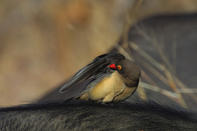
Flight feathers and contours are bound in their aerodynamic shapes by barbs and barbules, tiny hooks that hold the vanes together. Wear and tear from flight and weather, upsets these vanes and a bird is then required to re-latch its feathers by drawing them though its beak in a process known as preening.
The uropygial gland, or preen gland, is situated on the lower back of a bird, just above the tail. This gland secretes oil which is used to coat the feathers during preening to make them supple. The preen oil also serves a number of other functions. It protects the feathers, and skin, from bacteria and fungal infestations and strips excess fatty residue off the plumage. It also helps with waterproofing.
Powder and Bathing
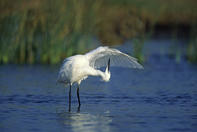
Herons and egrets combine the preening of their feathers with the application of powder from the fraying edges of power-down feathers on their bodies. The powder absorbs the dirt and grime accumulated in the process of feeding on fish or frogs, in often murky water. The birds then strip the downy-dirt off with a pectinate, comb-like, claw and re-oil their feathers with preen oil at the end.
Many birds bathe in water to clean themselves or cool down. Most land birds appear to physically enjoy water, and watching a bird bathing, can be most entertaining. The bird carefully balances the extent to which its feathers become soaked, so as not to impair flight should it suddenly need to escape a predator.
For aerial feeders, like swallows and bee-eaters that have weak legs, and hence poor get-away speeds from the ground, it is too dangerous to bathe at the water’s edge. They will dive and dip into water mid-flight to bathe. Even water birds bath by flushing water over their backs or dipping head and shoulders under the water.
After a good wash, birds will shake their feathers to dry them and then apply preen oil and preen.
Allo-Preening
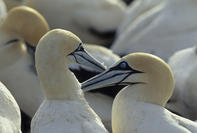
Preening the hard to reach areas such as the head and neck, is problematic for most animals and birds are no exception. To overcome the problem, many birds allo-preen. This is where one bird preens another and then the preened bird reciprocates. This behaviour is often practised by monogamous species and serves the dual function of pair-bonding.
Shaking in birds is a common form of feather hygiene. By lifting or rousing the feathers and then shaking vigorously, the bird not only gets rid of moisture, after a water bath, but also dislodges dust and parasites.
Sunbathing

Sunbathing is popular amongst many species of birds that assume a variety of postures to best expose their feathers to the sun. The sun is used to dry feathers after a bath or rain shower. It also has the effect of softening old oils and getting parasites to move around.
As soon as this happens, birds will begin to preen, ridding themselves of these unwanted contaminations. The UV light also kills bacteria and helps to restore the shape and structure of feathers dishevelled from flight.
Dust Baths and Anting
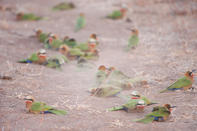
Some birds dust bath to clean themselves. Ground birds like francolin and guineafowl use this technique regularly. They wriggle their bodies into patches of loose bare earth and flick fine dust over their bodies with their wings.
The dust is supposed to help dislodge parasites. It also sticks to excess preen oil much like powder down and can then be preened off more effectively. African and Green wood-hoopoe fledgelings take a dust bath immediately on leaving the nest for the first time, due to unsanitary conditions in the nest, a defence against predation.
Anting is a poorly understood hygiene method used by birds. It is thought to be a part of preening and apparently may be active or passive. Using ants of the family formicinae that squirt formic acid in self-defence, a bird will rub the ant over its feathers (active anting) or lie where the ants will crawl over it (passive anting).
In both instances, the ant is encouraged to squirt formic acid on the feathers, often facilitated through shaking of the bird’s wings. It is thought that the formic acid may possibly act as a pesticide to kill parasites or dislodge ticks and mites, which are then removed in preening. Another suggestion is that it soothes the bird’s skin during moulting. Anting may also help to rid the bird of old preen oils.
Moulting
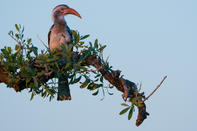
Because the rigours of flight may damage feathers beyond the kinds of repair that preening can achieve, all birds moult their feathers once to a few times annually to replace the entire set, especially the retrices.
Female hornbills use the opportunity of being incarcerated inside their sealed up tree cavity nests to shed the full set all at once. This helps to make room inside the nest chamber and furthermore, the female is safely secreted away from harm during this time.
By the time the female is ready to leave the nest chamber, she has replaced her full set of feathers. Most other birds lose and replace a few feathers at a time so that the ability to fly is not interrupted. This usually takes place after the breeding season.
By Megan Emmet